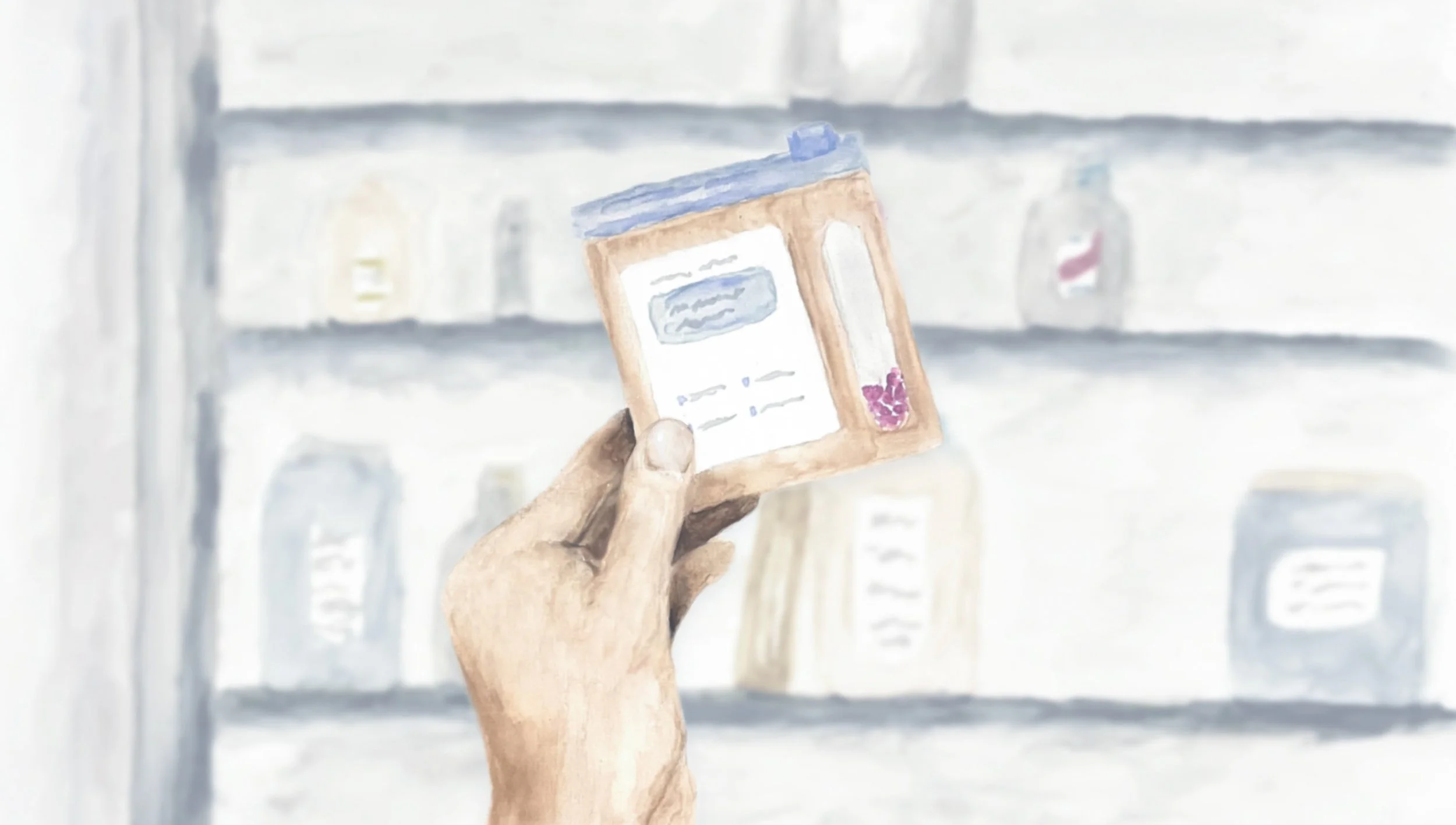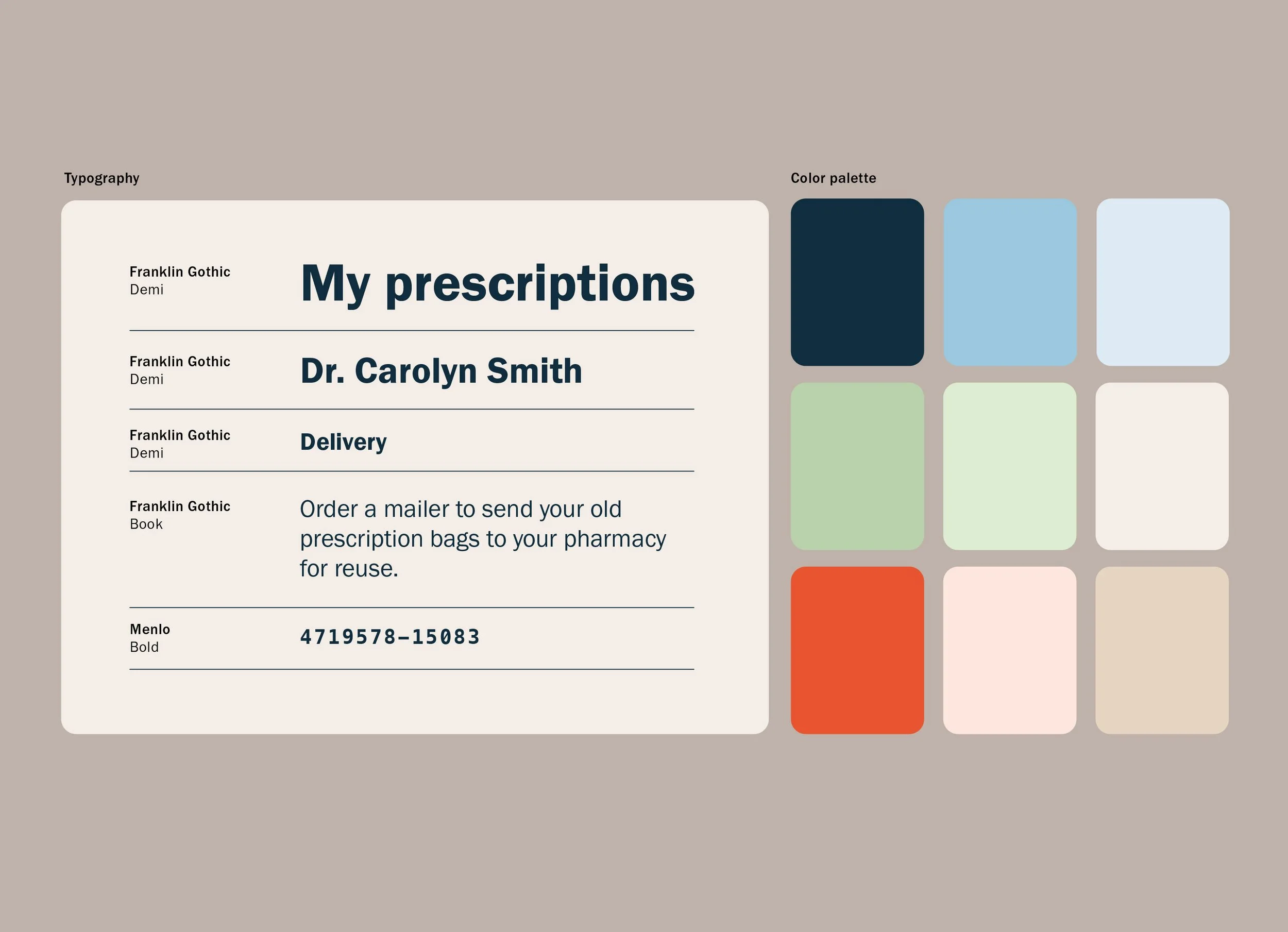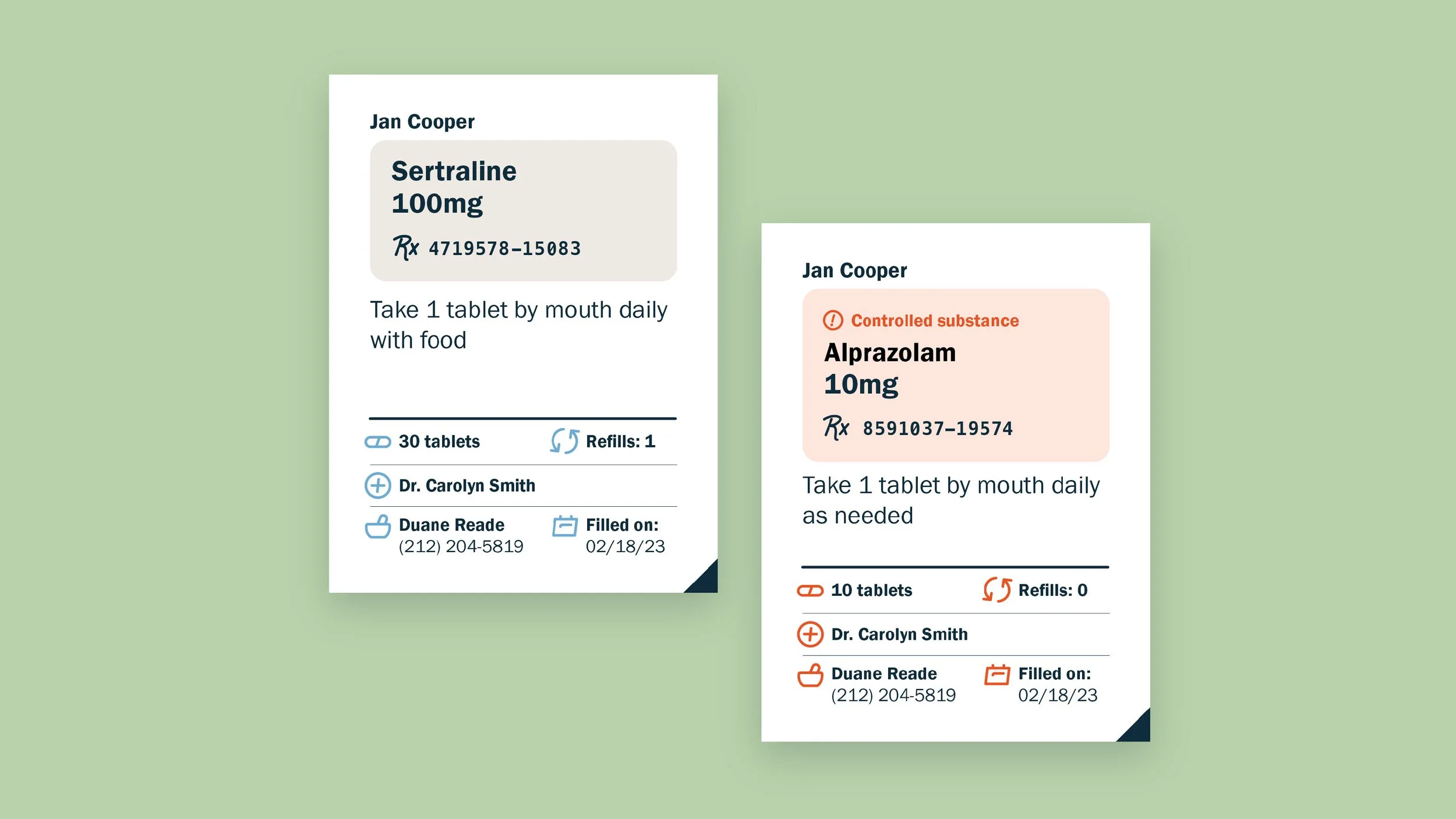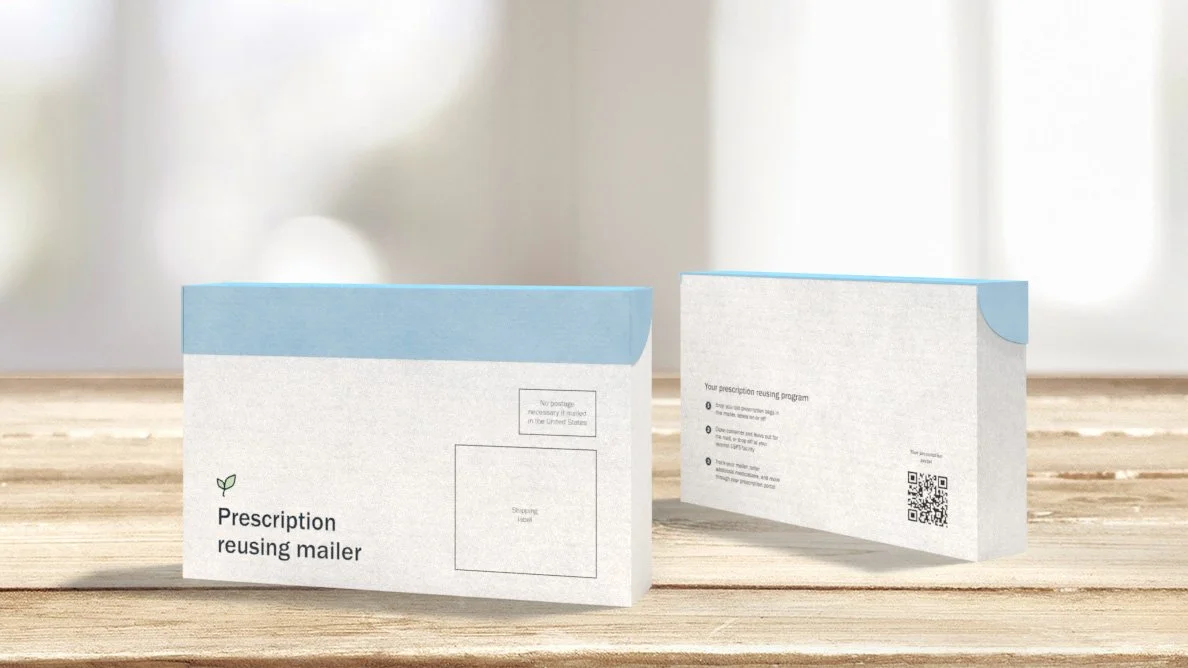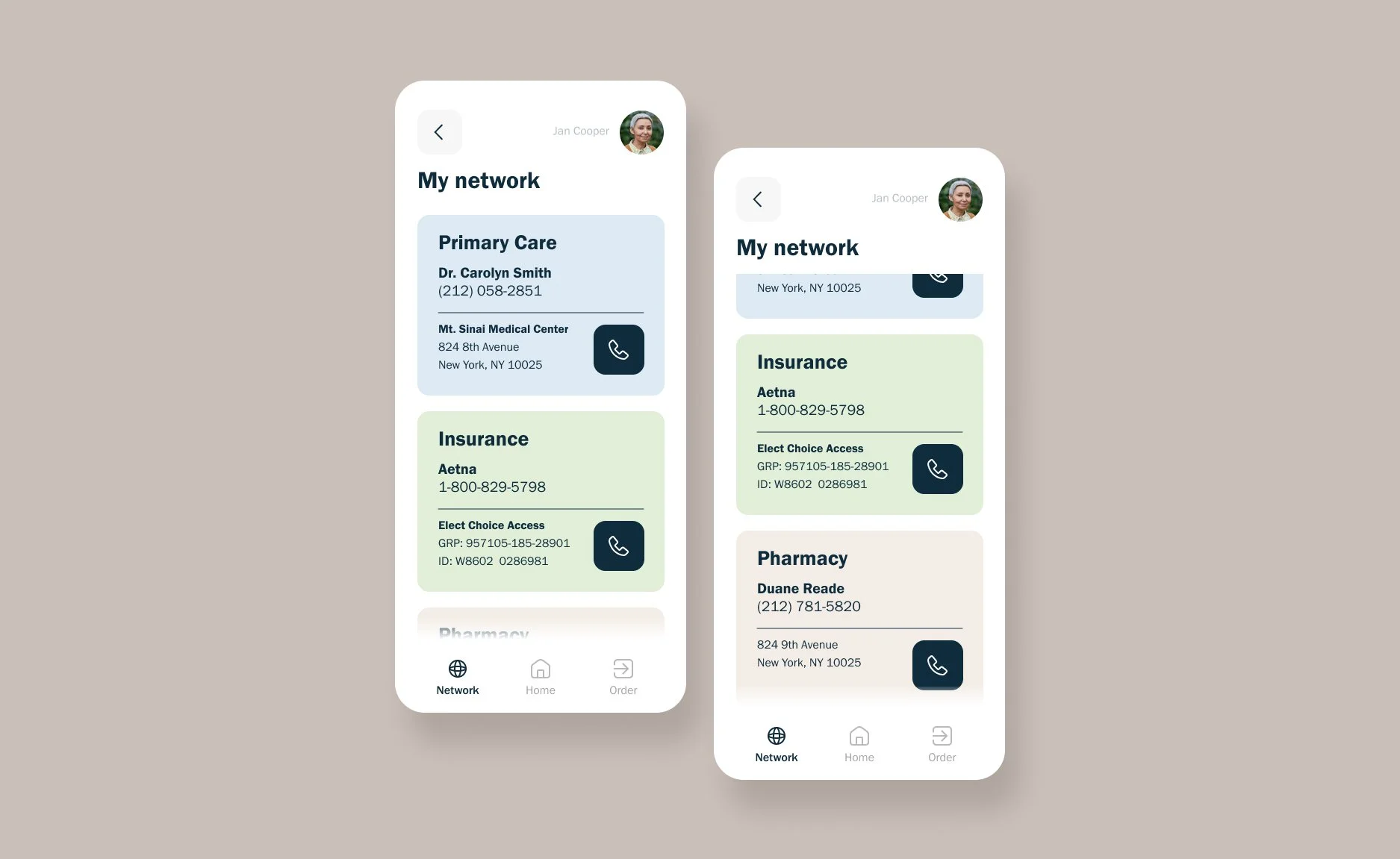Sustainable Prescription Ecosystem
Driven by sustainability and the power of design in healthcare to increase well-being, I created a concept for a biodegradable, reusable prescription ecosystem that aims to remove barriers to sustainability and accessibility.
Year
2023
Skills
UX ecosystem, branding, digital, packaging, illustration
Awards
2023 Fritz Gottschalk Museum of Avant-garde Awards | Shortlisted
Mendrisio, Switzerland
When I picked up a 2-pill prescription and a separate 30-day prescription from my pharmacy, I noticed that both came in a standard plastic orange bottle. The labels spanned the whole bottle and the text was small and uppercase, making it difficult to read. I realized how wasteful this was— the use of new plastic and text-only labels not ideal for those with visual impairments or ESL speakers.
I soon traveled to the midwest where recycling is sparsely available. To recycle the bottles, I would have had to drive to the nearest recycling center because recycling wasn’t available in the zip code I was staying in.
The prescription industry defaults to using plastic, but viable recycling programs are so rarely available that billions of these bottles litter our ecosystem every year.
There must be a way to make sustainability more accessible while improving the understanding of prescriptions for patients.
How can we remove barriers to sustainability for all in the cycle of prescriptions?
How can prescription packaging and labels be restructured to help people better understand their medications, empowering them in their health?
My concept:
A sustainable prescription packaging ecosystem
Biodegradable pouches would be ergonomic and user-centered with clear labels, windows to see medications, and a child-proof zipper.
New form: standing pouch
Pouches could stand up or compress down for storage.
Compressed space would reduce noise of rattling pills, offering more privacy.
Flat surfaces for label placement would increase readability from multiple angles.
Clear window on the front would make it easier to note the need for refills.
A color system would differentiate medications from controlled substances.
Multi-sized packaging system
Pouch sizes for different medication quantities would use less material than 1 standard large size, reducing waste.
Durable, biodegradable materials
Pouches would be made with durable, biodegradable materials so they could be reused, or decompose if thrown in the garbage. Durable bioplastics such as hemp plastic or PHA (polyhydroxyalkanoates), a bio-based polymer, could be used.
Prescription sticker labels would be biodegradable by using uncoated papers, biodegradable adhesive, and natural ink, such as soy-based ink.
Incentivized reusing
Incentivizing programs would encourage patients to bring in old pouches to their pharmacy or mail in for reuse.
Prescription label redesign
Clearer hierarchy
Labels would utilize a grid, high contrasting text in sentence case, and negative space. User testing and input from regulatory would inform hierarchy.
Icon system
An icon system would aid in comprehension for non-English speakers. International user testing would be conducted to ensure icons translate across languages.
Color system
A contrasting color system would be used in zipper colors and labels to differentiate controlled substances.
Sensorial experience
Touch
Packages would be made out of sturdy, biodegradable materials with a vellum finish to give natural texture.
Sound
The zipper would make a subtle, smooth zipping sound when sliding opened and closed, communicating functionality and security.
Pouches would be more compact, reducing the noise of pills rattling, giving patients more privacy.
Reusing program
Pharmacy drop-off
Drop-off bins in pharmacies would allow patients to turn in old prescription bags for reuse. Bins could be securely tied to pharmacy counters or adhered to the underside of counters.
Mail-in program
I challenged myself to create a mailer that in itself was reusable and reduced pain points to mailing. Durable packages would allow mailers to be reused multiple times. Using an adhesive would eliminate the need for patients to use packing tape, and partnership with postal systems would eliminate the need for patients to provide postage.
Digital Ecosystem
Digital instructions for use (IFU)
An online tool would sync with patients’ medications and provide them with instructions for use, reducing paper waste from pharmacies. An organized layout, jump-to nav, and a search feature would make finding information quick and seamless.
Quick link contact info
Patients would be able to enter in prescription-related contacts, such as their doctor and insurance.
Ordering feature
Patients could request prescription refills and/or reusable mailers so they could mail in old pouches. Tracking info would sync so they could see order status.
Alerts such as low refills remaining or missing information would notify patients to take action when needed.

